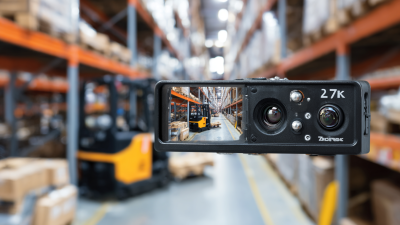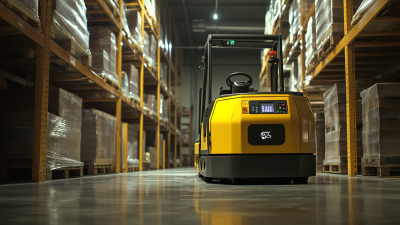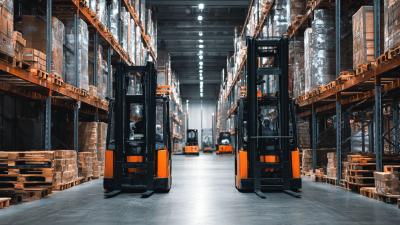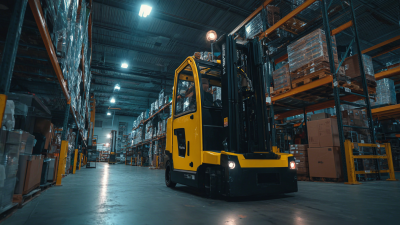Leave Your Message
In the fast-evolving landscape of warehouse operations, ensuring safety and efficiency is paramount. One crucial advancement in this domain is the integration of Forklift Cameras, which have become essential tools for enhancing visibility and minimizing accidents. According to a recent report by the National Safety Council, workplace incidents involving forklifts account for nearly 25% of all workplace injuries, highlighting the urgent need for improved safety measures. Implementing a reliable Forklift Camera system not only aids in accident prevention but also boosts operational productivity.
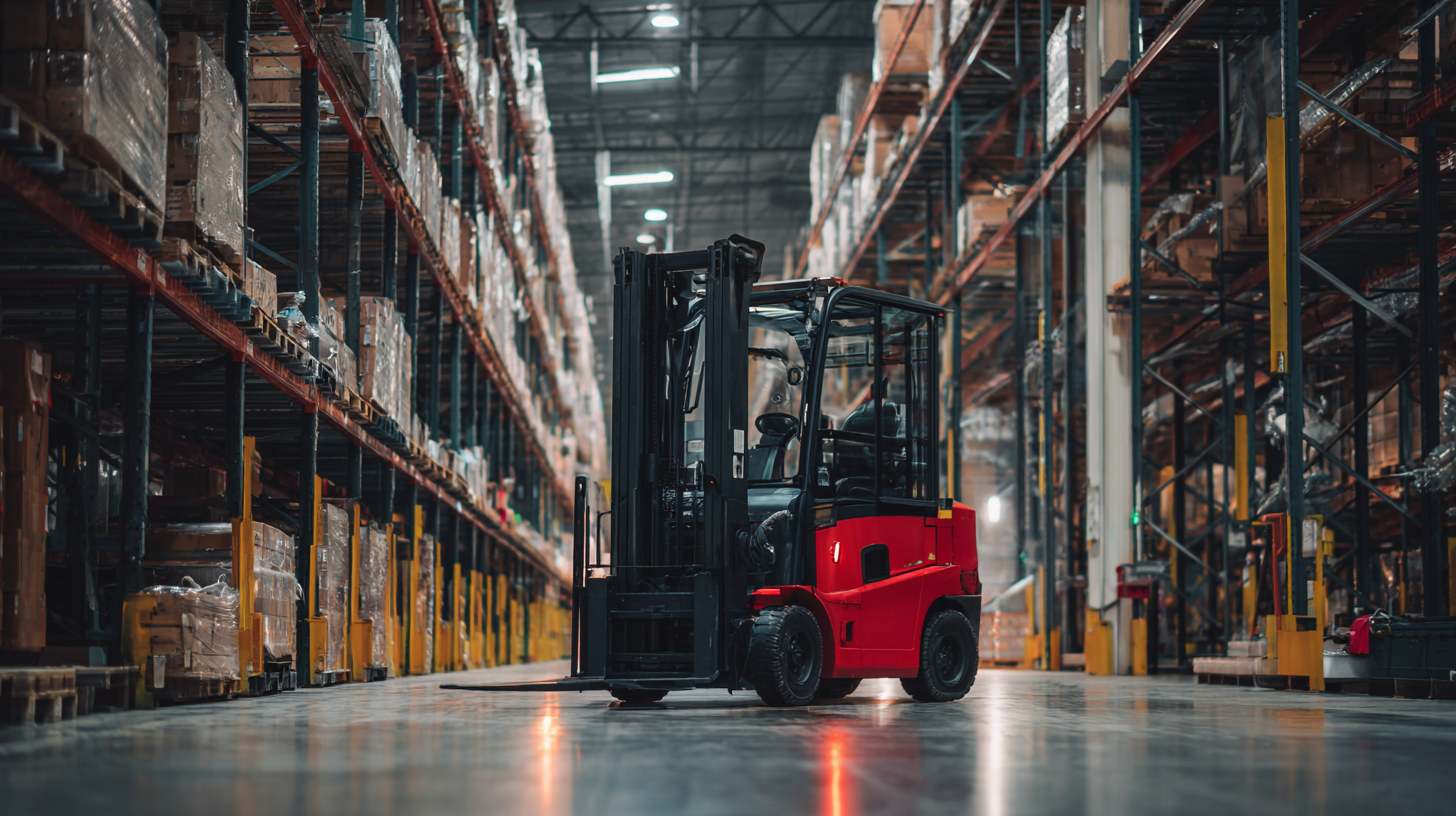
Renowned industry expert, Dr. Emily Hartman, a leading safety consultant at the Warehouse Safety Alliance, emphasizes the importance of adopting technology in warehouse settings. She states, "The right Forklift Camera can transform how we approach safety; it provides operators with the crucial visibility needed to make informed decisions, ultimately reducing risks and safeguarding lives." As businesses strive for excellence in their operations while minimizing liability, the right choice of Forklift Camera can make a significant difference. Understanding the available options and their features is essential for making an informed decision that aligns with the unique demands of each warehouse environment.
When selecting the best forklift camera for safe warehouse operations, several key factors must be taken into account. First and foremost, the camera's resolution is crucial. According to a recent industry report, cameras with a resolution of at least 1080p significantly enhance visibility, allowing operators to better observe their surroundings and reduce the risk of accidents. Furthermore, durable construction is essential, as warehouse environments are often harsh. Cameras designed to withstand dust, moisture, and extreme temperatures will ensure long-term reliability and optimal performance.

Another important consideration is the camera’s field of view. A wider field of view allows operators to monitor larger areas, improving overall safety. Research indicates that forklifts equipped with cameras that provide a 120-degree or greater field of view can minimize blind spots, which are a major contributor to workplace accidents. Additionally, integration with existing safety systems, such as alarms and sensors, can enhance operational safety. Ensuring that the chosen camera system is compatible with these features can provide comprehensive protection for operators and warehouse staff alike.
When it comes to selecting the right forklift camera for safe warehouse operations, understanding the differences between wired and wireless options is crucial. Wired cameras are often preferred for their reliability; they provide consistent video quality without interference from wireless signals. This makes them ideal for busy environments with many electronic devices. However, installation can be more complex, requiring careful routing of cables to avoid hazards.
On the other hand, wireless forklift cameras offer more flexibility and ease of installation. They can be quickly mounted in various locations without the hassle of running cables. This feature is particularly beneficial in spaces where mobility and accessibility are essential. However, it’s important to consider potential signal interference from other equipment in a warehouse, which could affect video transmission quality.
Tips for choosing the best option include assessing your warehouse layout and the amount of equipment that may cause interference. If you opt for wireless, ensure the camera has a strong battery life and a reliable connection. For wired systems, look for weatherproof cables, especially if they’ll be exposed to elements or wear. Ultimately, the choice between wired and wireless will depend on your specific operational needs and the environment in which you’ll be using the camera.
| Camera Type | Connectivity | Installation Ease | Cost | Image Quality |
|---|---|---|---|---|
| Wired Forklift Cameras | Cabled Connection | Moderate | $300 - $800 | High Definition |
| Wireless Forklift Cameras | Wireless Signal | Easy | $200 - $700 | Standard to HD |
| 360-Degree Cameras | Wireless or Wired | Moderate to Easy | $500 - $1500 | Ultra High Definition |
When selecting a forklift camera for safe warehouse operations, it’s crucial to evaluate specific camera features that enhance safety and efficiency. According to a report by the Occupational Safety and Health Administration (OSHA), nearly 20,000 forklift injuries occur annually, highlighting the necessity for effective visual aids. A high-definition camera with wide-angle capabilities enables operators to have better visibility of their surroundings, drastically reducing blind spots. This is particularly important in busy warehouse environments where visibility can be obstructed by shelves and other obstacles.

Moreover, integrating features such as night vision and motion detection significantly optimizes operational safety. A study by the National Safety Council found that incidents involving forklifts could be reduced by up to 50% when equipped with advanced camera systems. Night vision capabilities allow for safe operation in low-light conditions, while motion detection can alert operators to potential hazards, thereby preventing accidents before they occur. Leveraging these technologies not only promotes a safer workplace but also enhances productivity by mitigating downtime due to accidents.
When it comes to ensuring safe warehouse operations, the installation and maintenance of forklift camera systems play a crucial role. According to a report by the Occupational Safety and Health Administration (OSHA), nearly 100,000 forklift-related accidents occur in the U.S. each year, emphasizing the need for effective safety measures. The right camera system can significantly reduce blind spots, enhancing visibility for operators and preventing potential collisions.
When selecting a forklift camera system, it's important to consider the installation process; choose systems that can be easily integrated with existing machinery and that offer clear video quality under various lighting conditions.
Maintenance of forklift camera systems is equally essential to ensure their longevity and effectiveness. Regular checks should include cleaning the camera lenses, checking cable connections, and verifying the functionality of the display in the operator’s cabin. According to a study from the National Safety Council, proper maintenance can prevent up to 70% of equipment failures.
It’s also recommended to schedule professional inspections annually, which can help identify potential issues before they lead to serious accidents. An effective maintenance strategy not only enhances the safety of warehouse operations but also maximizes the return on investment in camera technology.
When selecting the best forklift camera for safe warehouse operations, cost-effectiveness is a critical consideration that can influence the overall functionality and efficiency of the investment. Businesses must first assess their budget, factoring in not only the initial cost of the camera itself but also any necessary accessories, such as mounting kits, wiring, and additional sensors. This comprehensive approach ensures that the budget aligns with long-term operational goals, enhancing safety measures without overspending.
Moreover, it’s essential to evaluate the potential return on investment (ROI) when considering various forklift camera options. Cheaper alternatives may cut initial costs but often lack the necessary features that ensure durability and provide high-quality images in challenging environments. Investing slightly more in a robust system with advanced capabilities can lead to significant savings down the line by reducing accidents, improving efficiency, and minimizing liability. Therefore, prioritizing quality alongside cost will facilitate a safer working environment, making the initial investment worthwhile in the overall operational landscape of a warehouse.
